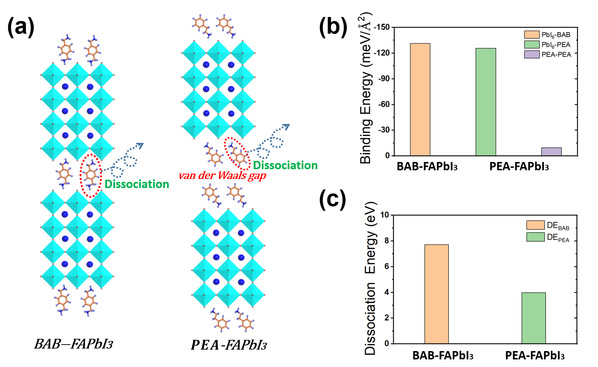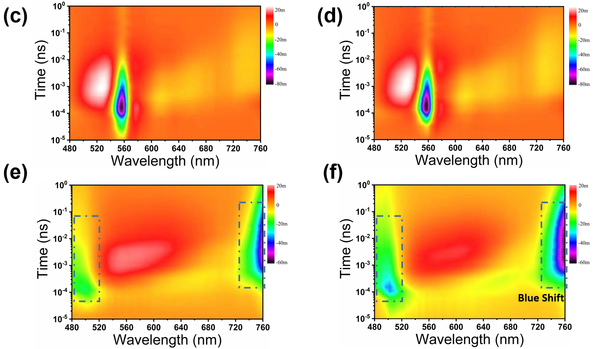Organic-inorganic hybrid halide perovskites are emerging as a promising material in light-emitting diodes (LEDs) for their remarkable optoelectronic properties, including narrow full width half maximum (FWHM), high luminescence quantum yield (PLQY), and solution processability. The external quantum efficiency (EQE) of perovskites LEDs has exceeded 20% in just 5 years. However, the poor stability severely hampers the further application of PeLEDs, which originates from the easy decomposition of perovskite at high humidity environment or high temperature and the halide ion migration under electric filed. Recently, a team of SPST researchers made a breakthrough on the stability of organic-inorganic PeLEDs. Their study, “Highly Stable Hybrid Perovskite Light-Emitting Diodes Based on Dion-Jacobson Structure” was published online at Aug 17 in Science Advances.
In this work, Ning Zhijun’s group applied a new bidentate organic molecule named 1,4-Bis(aminomethyl)benzene (BAB), which weds the inorganic layers with chemical bond, forming a Dion-Jacobson (DJ) structure. The traditional organic molecule meanwhile, like phenylethylamine (PEA), forming a Ruddlesden-Popper (R-P) structure, connects the inorganic layers with van der waals force. Through first principles calculation, they proved that both binding energy between the layered structures and molecule dissociation energy of DJ structure are much higher than RP structure (Figure 1). What’s more, the application of BAB reduces the ratio of dielectric organic molecules in perovskites, leading a higher current injection efficiency and this helps lower the joule heat in devices while working.

Figure 1. (a) BAB D-J structure and PEA R-P structure (b) calculation binding energy (c) calculation dissociation energy
By adjusting the ratio of BAB molecule to tune the n values, the PLQY of the films are much improved. The optimized DJ structural perovskite film exhibits the best external quantum efficiency of 5.20% with a maximum radiance of 88.5W sr-1 m-2. The EQE roll-off is significantly reduced and the device shows an operating lifetime of 100 hours, almost two orders of magnitude longer compared with RP structure. This is the longest T50 value reported up to now for hybrid perovskite that tested at the current density giving rise to the best EQE value.

Figure 2. (c, d) TAS of BAB-based DJ structure perovskite film before and after continuous operation. (e, f) TAS of PEA-based RP structure perovskite film before and after continuous operation, the intensity of the bleaching peak at 485 nm is increased, the peak at 770 nm is slightly blue shifted.
All the work in this paper was carried out at ShanghaiTech University. Shang Yuequn, Liao Yuan, Wei Qi from Professor Ning’s group are first authors of this work. Dr. Ning Zhijun and Dr. Liu Weimin are the corresponding authors. Dr. Ke Youqi provided valuable discussion about theoretic simulation. This work was supported by Shanghai International Cooperation Project (16520720700), Shanghai Key Research Program (16JC1402100), ShanghaiTech Start-up Funding, and National Natural Science Foundation of China (U1632118, 21571129). The authors also thank the Testing Center of ShanghaiTech University, and the HPC Platform of ShanghaiTech University.
Read more at: https://advances.sciencemag.org/content/5/8/eaaw8072/tab-pdf

